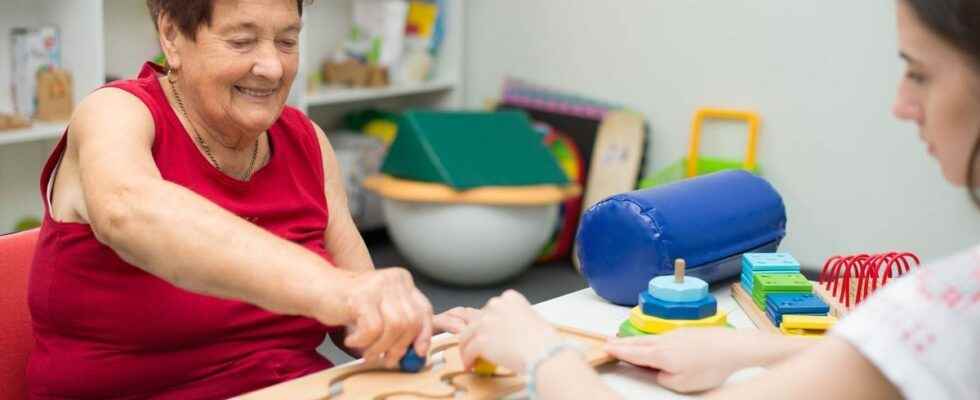Published on
Updated
Reading 2 mins.
Each year, approximately 150,000 French people are victims of a stroke. To better manage this often disabling pathology, the Haute Autorité de Santé has published its first recommendations for the rehabilitation of patients.
In France, 500,000 people live with sequelae induced by a stroke. If the survival of the patient and the possible repercussions depend on the speed of the initial care, a serious follow-up during the months and years after the stroke is also essential to limit the consequences in the long term. To improve the rehabilitation of motor and cognitive functions, the HAS publishes its first recommendations during the chronic phase, that is to say from 6 months after the onset of the stroke. These long-awaited measures make it possible to harmonize practices on the territory with the health professionals concerned: doctors, masseurs-physiotherapists, occupational therapists, speech therapists, etc.
Post stroke rehabilitation: recommended exercises
Until now, no recommendation existed about the rehabilitation to be put in place during the chronic phase of the stroke – that is to say beyond 6 months after the occurrence of the accident.
This is now done with this new list, which lists all the possible (and effective) interventions in the context of the rehabilitation of motor (nervous, muscular and tendon) and cognitive functions following a stroke.
Improve autonomy by re-educating motor function
The motor rehabilitation of the legs and arms is done according to each patient profile by “therapeutic methods practiced manually or with instruments”can we read in the press release.
Rehabilitation also includes activity programs:
- a walk ;
- physical exercises;
- aerobic exercises (running, cycling, swimming, dancing…);
- virtual reality sessions…
Robotic-assisted rehabilitation and balneotherapy are options considered by HAS, but in the absence of data on the subject, they cannot be part of the recommendations.
Rehabilitation of cognitive function
Memory disorders, planning difficulties, attention disorders, communication disorders… can be observed in patients after a stroke. Learning compensatory measures and acquiring coping skills are part of rehabilitation. The HAS also recommends the practice of an “aerobic” physical activity (not very intense but maintained).
For communication disorders, the HAS recommends repetitive transcranial magnetic stimulation (rTMS) and computerized language rehabilitation accompanied by a therapist. On the other hand, music therapy or acupuncture are not recommended due to lack of proof of their effectiveness.
A follow-up adapted to each profile
This rehabilitation must of course be subject to appropriate monitoring, depending on the profile and specificities of the patient concerned.
The HAS specifies in fact “that the symptoms observed and their sequelae are so different from one patient to another that it is difficult to obtain similar results”.
These initial recommendations may soon be supplemented with the help of new scientific data.
Consult a cardiologist online
Stroke is not always easy to spot. The knowledge of the first symptoms, sudden or progressive, makes it possible to react as quickly as possible and potentially to reduce the after-effects.
Among the most common signs are:
- Muscle weakness or numbness in the face, arm or leg.
- Visual disturbances;
- Language difficulties;
- loss of sensitivity;
- Unusual and very violent headaches;
- A loss of balance;
- Disorders of consciousness, from drowsiness to coma.
